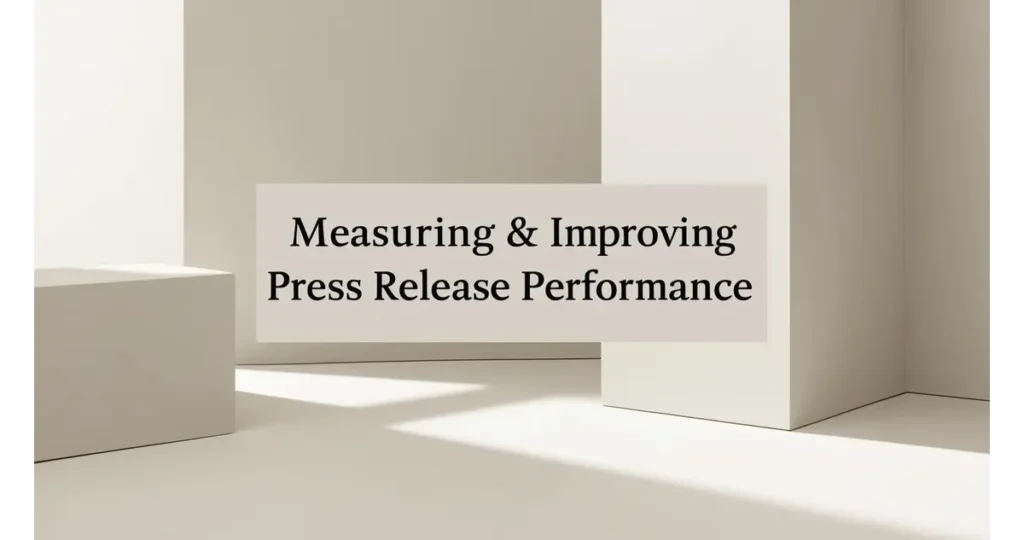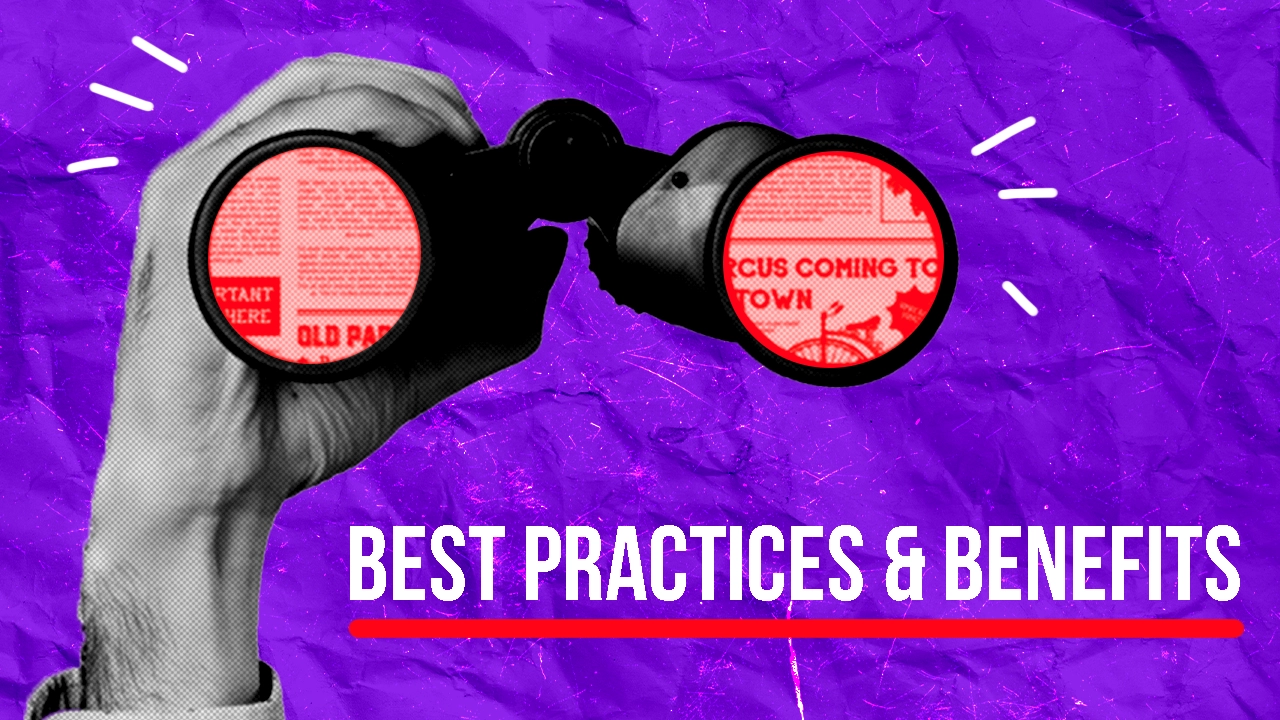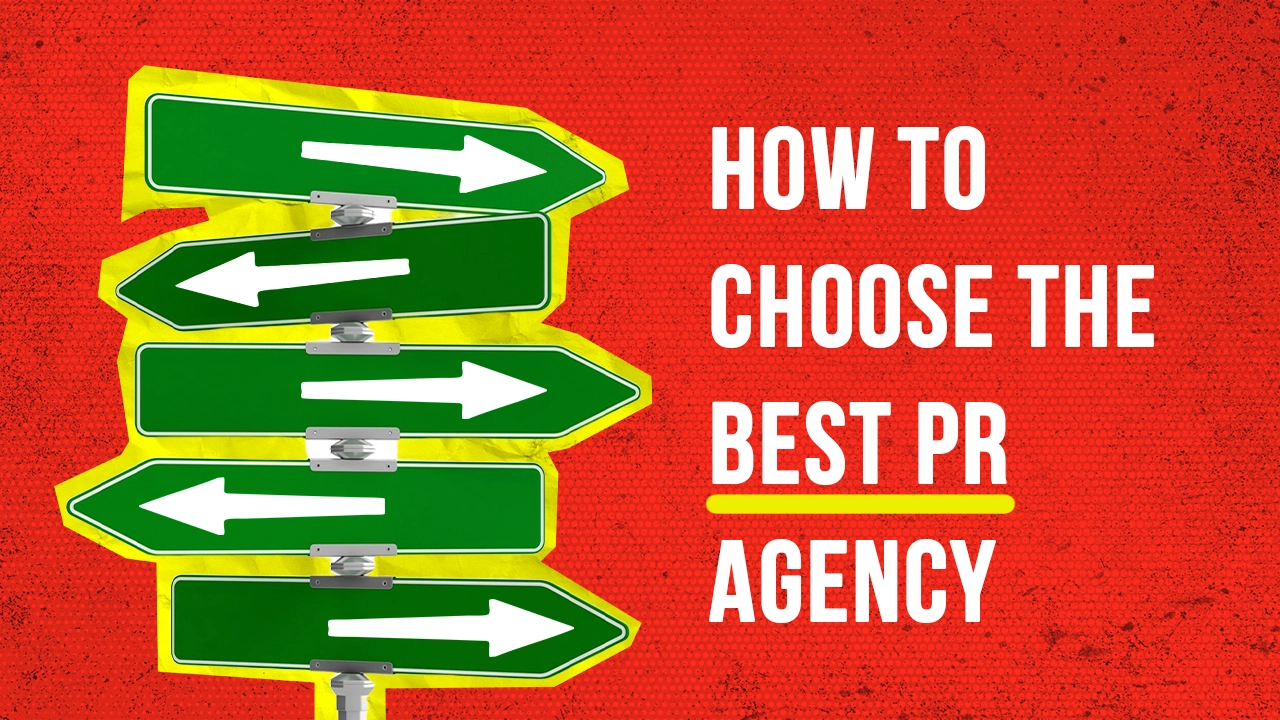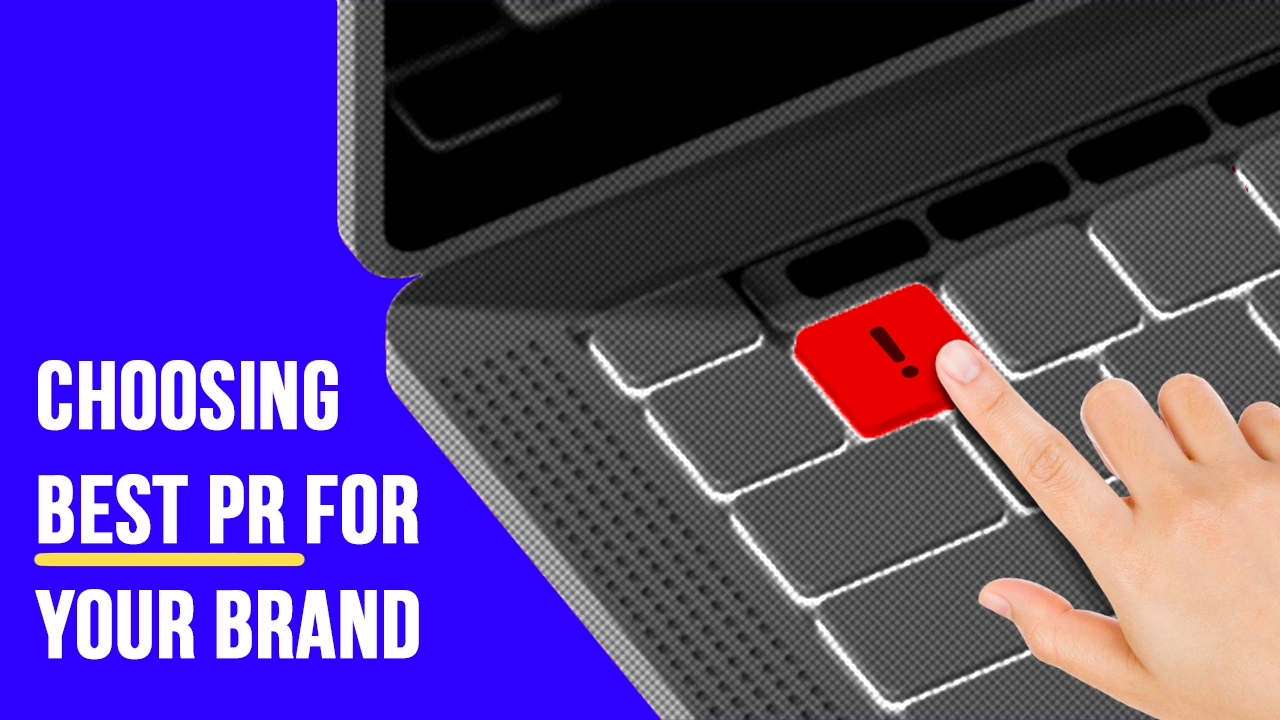A well-crafted press release is one of the most effective tools for gaining media exposure, improving brand awareness, and driving organic traffic. However, many businesses and marketers struggle with low visibility issues in their press release distribution strategies, leading to minimal media pickup, low engagement, and lack of search engine visibility.
If your press releases aren’t achieving the results you expect, the problem is often not the content but how it is being distributed. Using targeted press release distribution, SEO best practices, and AI-driven optimizations, you can significantly enhance the reach and visibility of your press releases.
This guide will help you identify the common reasons press releases fail, provide step-by-step solutions to fix low visibility, and introduce data-driven strategies to ensure your press releases reach the right audience, rank higher in search engines, and generate real engagement.
Key Takeaways
- Common Visibility Issues: Poor targeting, weak headlines, lack of newsworthiness, and ineffective distribution.
- Targeted Distribution Matters: Sending press releases to niche media outlets and industry-specific journalists improves reach.
- Timing Is Crucial: Best days to send are Tuesday–Thursday, best time is early morning (8-10 AM).
- SEO Optimization Is Key: Use structured data, keyword optimization, and AI-powered tools for better search rankings.
- Measure & Adjust Strategies: Use Google Analytics, press release dashboards, and backlink tracking to refine distribution.
- Leverage Digital PR & Social Media: Promote releases on LinkedIn, Twitter, and relevant platforms for better engagement.
- Use Paid Press Release Distribution: Free platforms offer limited reach, while PR Newswire, Business Wire, and eReleases provide better exposure.
Table of Contents
Understanding Press Release Visibility Issues

A press release’s success depends on multiple factors, including distribution strategy, content optimization, and audience targeting. If your press releases are not gaining traction, visibility issues could be the root cause.
Common Reasons Press Releases Don’t Gain Traction
If your press release isn’t generating media coverage, traffic, or engagement, you may be making one or more of these mistakes:
- Poor Headline Selection
- Journalists and readers scan headlines quickly.
- A weak, generic, or uninteresting headline fails to capture attention.
- Best Practice: Keep your headline under 80 characters and include strong action words, numbers, and power phrases.
- Example: Instead of “Company Launches New Product”, write “Revolutionary AI-Powered Software Boosts Productivity by 300%”.
- Weak Distribution Strategy
- Sending a press release to a broad, untargeted audience results in poor media pickup.
- Mass email blasts to generic journalist lists lead to low open rates.
- Best Practice: Segment your audience and send press releases to relevant journalists and niche publications.
- Lack of Newsworthiness
- A press release that sounds like an advertisement instead of real news is likely to be ignored.
- Best Practice: Ensure your press release:
- Covers timely, relevant, and newsworthy information.
- Includes data, quotes, or unique insights to make it more compelling.
- Answers the “Why should people care?” question within the first few sentences.
- No Optimization for Search Engines (SEO Issues)
- Press releases without strategic keyword placement, structured data, and internal links struggle to rank in search engines.
- Best Practice:
- Use high-volume, low-competition keywords in the headline, subheadings, and throughout the content.
- Add schema markup to help search engines understand and categorize your content.
- Include optimized images with alt text for better visibility.
- Over-Reliance on Free Press Release Distribution
- Free PR distribution services have limited reach and often don’t get indexed well by search engines.
- Best Practice:
- Use a mix of paid and free distribution services for maximum exposure.
- Consider syndicating press releases across industry-specific media outlets.
The Role of Distribution Platforms in Visibility
Choosing the right press release distribution platform can make a significant difference in visibility and media pickup. Here’s a comparison of the most effective platforms:
| Platform | Best For | Pros | Cons |
|---|---|---|---|
| PR Newswire | Mainstream Media Coverage | Wide reach, high credibility | High cost |
| Business Wire | Global Business & Financial News | Strong international reach | Expensive |
| GlobeNewswire | Public Companies & Investors | Great for finance industry | Less popular for general businesses |
| eReleases | Small Businesses & Startups | Affordable, good media contacts | Limited reach compared to PR Newswire |
| PRLog (Free) | Small-scale Press Releases | No cost, easy to use | Limited visibility |
Paid vs. Free Press Release Distribution
- Free PR distribution (like PRLog) can help startups get some visibility but doesn’t guarantee media pickup.
- Paid distribution (like PR Newswire) increases exposure by sending press releases directly to journalists, major news outlets, and industry-specific platforms.
- Recommendation: If budget allows, paid distribution is the best strategy to enhance press release visibility.
How to Identify and Fix Low Visibility Problems

Signs That Your Press Release is Underperforming
If your press release isn’t generating results, look for these warning signs:
- Low Open Rates – Journalists and media contacts aren’t opening your press release emails.
- No Media Pickup – Your press release isn’t being featured in major publications.
- Minimal Website Traffic – No noticeable increase in website visits after distribution.
- Few or No Backlinks – No authoritative sites are linking to your press release.
Step-by-Step Process to Troubleshoot Low Visibility Issues
- Analyze Your Distribution Channels
- Check if your press release is being sent to the right media outlets.
- Use journalist databases like Cision, Muck Rack, or HARO to refine your audience targeting.
- Optimize Your Press Release for Readability & Engagement
- Best Headline Practices:
- Keep it under 80 characters.
- Use numbers, action words, and power phrases.
- First Paragraph Must Answer:
- WHO, WHAT, WHEN, WHERE, WHY, and HOW.
- Improve Targeting by Sending to the Right Journalists
- Instead of mass emailing, focus on:
- Industry-specific journalists and bloggers.
- Local media if your press release is region-specific.
- Use Multimedia to Boost Engagement
- Why? Press releases with images, videos, or infographics get 3X more engagement.
- How? Attach a high-quality image, an embedded video, or an infographic summarizing the key details.
By fixing these visibility issues, your press releases will have higher open rates, better search rankings, and increased media pickup.
Targeted Press Release Distribution Strategies
Once you’ve identified the causes of low visibility issues, the next step is implementing a targeted press release distribution strategy to increase reach, engagement, and media pickup. A well-executed distribution plan ensures that your press release reaches the right journalists, news outlets, and online platforms—maximizing exposure and impact.
Why Targeted Press Release Distribution Matters
- Better Media Pickup – Sending your press release to relevant journalists increases the likelihood of publication.
- Higher Engagement Rates – Readers are more likely to interact with content that resonates with their interests.
- Improved SEO & Online Presence – Targeted distribution generates high-authority backlinks, boosting search rankings.
Segmenting Your Audience for Better Engagement
A one-size-fits-all press release strategy does not work anymore. You need to segment your audience and distribute strategically.
How to Segment Your Audience for Press Releases
- Industry-Specific Distribution
- Identify niche publications, journalists, and influencers in your industry.
- Example: If launching a tech product, send your press release to TechCrunch, Wired, and Gizmodo, not general news sites.
- Localized Press Release Distribution
- Target local media outlets if your announcement is region-specific.
- Example: A new restaurant opening should be pitched to local newspapers, radio stations, and city blogs.
- B2B vs. B2C Targeting
- If your business caters to other businesses (B2B), focus on trade publications and LinkedIn.
- If your product is for consumers (B2C), target lifestyle blogs, social media influencers, and consumer news outlets.
Pro Tip: Personalize Press Release Pitches
Instead of mass emailing your press release, personalize your pitch:
- Use the journalist’s name
- Mention previous articles they’ve written
- Explain why your press release is relevant to their audience
Struggling to reach the right media contacts? Let GlobalWavePR handle your press release distribution! Our targeted media outreach ensures your press release gets published where it matters most.
Using Niche Media Contacts & Journalist Databases

To get maximum exposure, use journalist databases and PR tools for outreach.
| Tool | Best For | Features |
|---|---|---|
| Cision | Large businesses & agencies | Access to 1.4 million journalists & influencers |
| Muck Rack | Finding niche journalists | Tracks journalist interests & social activity |
| HARO (Help a Reporter Out) | Getting media mentions | Journalists request expert sources for stories |
| Prowly | Small businesses | PR automation & journalist outreach |
Pro Tip: Track journalist Twitter accounts to see what topics they’re currently interested in.
Timing & Frequency: Best Practices
When to Send a Press Release
- Best Days: Tuesday – Thursday
- Best Time: 8:00 AM – 10:00 AM (when journalists check their inbox)
- Avoid Weekends & Holidays: Journalists receive fewer pitches and are less likely to engage.
How Often Should You Send Press Releases?
- For major announcements: 1–2 press releases per month.
- For regular updates: Quarterly press releases for consistent visibility.
- Follow-ups: If a journalist doesn’t respond, send a polite follow-up within 3-5 days.
Need personalized media contacts? GlobalWavePR has a vast network of journalists and industry-specific media outlets to ensure your press release gets noticed.
SEO & AI-Powered Optimization Techniques

SEO (Search Engine Optimization) plays a crucial role in press release visibility. Optimizing your press release for search engines helps it rank higher on Google, Google News, and industry-specific platforms.
Why Optimize for SEO?
- Higher Search Rankings → More organic traffic.
- Google News Visibility → Increased brand authority.
- Backlinks from News Sites → Improved domain authority.
How Google Ranks Press Releases: Understanding Search Visibility
Google’s algorithm prioritizes:
- Well-structured headlines with primary keywords
- Engaging, informative content that answers user intent
- High-quality backlinks from authoritative sites
- Schema markup for better indexing
Best Practices for Optimizing Press Releases for Google
- Use High-Performing Keywords
- Identify high-volume, low-competition keywords using Ahrefs, SEMrush, or Google Keyword Planner.
- Example: Instead of “Press Release for a New Product,” use “AI-Powered Marketing Software Revolutionizes E-commerce”.
- Optimize for Google News
- Include newsworthy, time-sensitive content.
- Use structured data (schema markup) to increase visibility.
- Add Internal & External Links
- Link to relevant pages on your website for SEO benefits.
- Reference credible external sources to enhance trustworthiness.
- Use Multimedia Elements
- Embed images, videos, and infographics to increase engagement.
- Studies show that press releases with images receive 3X more views.
Leveraging AI for Better Distribution & Optimization
AI-powered tools can help you optimize press releases, identify target audiences, and automate distribution.
Top AI-Powered Press Release Tools
| Tool | How It Helps |
|---|---|
| Jasper AI | AI-driven content writing & optimization |
| Surfer SEO | Real-time SEO analysis for keyword optimization |
| MarketMuse | AI-powered content strategy for ranking better on Google |
How AI Improves Press Release Visibility:
- AI-driven keyword research → Helps find trending topics.
- Smart press release personalization → Enhances targeting.
- Automated journalist outreach → AI suggests ideal media contacts.
Social Media & Digital PR Integration
Press releases shouldn’t be limited to news sites—they should also be amplified on social media platforms to reach a broader audience.
How to Distribute a Press Release on Social Media
- LinkedIn – Share as a company update or article.
- Twitter/X – Post a brief summary with a compelling quote.
- Facebook & Instagram – Use story features for quick engagement.
- Reddit & Quora – Share in niche industry forums for discussions.
Pro Tip: Encourage industry influencers and partners to share your press release for wider reach.
By integrating targeted press release distribution strategies with SEO & AI-powered optimization, your press releases will achieve:
- Higher visibility on Google & media platforms
- Better engagement from journalists & readers
- Increased backlinks & domain authority
Want your press release to rank on Google? Our SEO-optimized press release services at GlobalWavePR help improve your press release’s search visibility, getting it indexed in Google News and major media platforms.
Promote Your Press Release with GlobalWavePR
Struggling with Low Visibility? We’ve Got You Covered!
At GlobalWavePR, we specialize in high-impact press release distribution that ensures maximum media exposure, SEO benefits, and targeted audience reach.
What We Offer:
- Guaranteed Press Release Distribution – Get published on top-tier news sites.
- Targeted Media Outreach – We connect your press release with industry-specific journalists.
- SEO & Google News Optimization – Get better rankings and higher visibility.
- Analytics & Performance Tracking – Measure press release success with real-time analytics.
Why Choose GlobalWavePR?
- Fast & Reliable Distribution – Get your press release out within 24-48 hours.
- Global Reach – Reach audiences in the US, UK, Canada, and worldwide.
- Affordable Pricing – Press release packages for businesses of all sizes.
Ready to boost your press release visibility? Contact GlobalWavePR Now
Measuring & Improving Press Release Performance

Distributing a press release is only half the battle—the other half is measuring results and making improvements based on analytics.
1. Key Metrics to Track for Press Release Success
| Metric | Why It Matters | Tools to Measure |
|---|---|---|
| Open Rates | Indicates how many journalists opened your press release email | Email marketing tools (Mailchimp, HubSpot) |
| Click-Through Rate (CTR) | Measures engagement levels | PR distribution platform analytics |
| Google News Indexing | Determines if Google considers your press release newsworthy | Google News |
| Backlinks & Domain Authority | Higher backlinks improve SEO & credibility | Ahrefs, Moz, SEMrush |
| Referral Traffic | Tracks how much traffic your press release drives to your website | Google Analytics |
Pro Tip: If a press release doesn’t perform well, analyze what worked and what didn’t—then adjust for future releases.
2. How to Analyze Press Release Performance
- Step 1: Check Google Analytics – Identify traffic spikes from press releases and analyze user engagement.
- Step 2: Track Media Pickups – Use Google Alerts to see where your press release is published.
- Step 3: Analyze SEO Metrics – Check backlinks and keyword rankings using SEMrush or Ahrefs.
- Step 4: Monitor Social Media Performance – Use Hootsuite, Sprout Social, or Twitter Analytics to track shares.
3. Adjusting Strategies Based on Performance
f your press release underperforms, consider these adjustments:
- Headline & Angle Optimization
- A boring or vague headline might be the problem.
- Rewrite using power words, numbers, and action-driven phrases.
- Improve Audience Targeting
- If you sent your release to general media, try niche publications.
- Example: A healthcare startup should focus on medical and technology media, not generic business outlets.
- Enhance SEO & Google Ranking
- If your press release isn’t ranking, revisit keyword optimization and structured data.
- Add internal links to relevant blog posts for better authority.
- Leverage Social Media & Influencers
- If traditional media isn’t picking up your press release, try LinkedIn, Twitter, or Reddit.
- Engage industry influencers to share your release.
Not getting enough backlinks or media pickup? Let GlobalWavePR handle your press release distribution and tracking for guaranteed results!
Frequently Asked Questions (FAQs)
Q1: How do I ensure my press release reaches the right audience?
• Research and build a targeted media list using databases like Cision, Muck Rack, or HARO.
• Segment your audience (e.g., industry-specific, regional, B2B vs. B2C).
• Personalize your email pitch to journalists, explaining why your press release is relevant to them.
Q2: Are free press release distribution services effective?
• Free press release platforms can offer basic visibility but won’t get major media pickup.
• Paid distribution services offer wider exposure and higher credibility.
• If budget is an issue, consider a hybrid approach—use free services for small updates and paid services for major announcements.
Q3: How long should a press release be?
Ideal Length: 300–500 words
Solution:
• Use a clear structure: Headline → Summary → Main Body → Quotes → Call-to-Action.
• Keep sentences short and engaging.
• Use bullet points and subheadings to improve readability.
Q4: How can I optimize my press release for SEO?
•Include high-volume keywords naturally in the headline, subheadings, and body text.
•Use schema markup to improve indexing on Google.
•Add internal & external links for better ranking.
•Include multimedia (images, videos, infographics) to boost engagement and shares.
Q5: How do I measure the success of my press release?
Key Metrics to Track:
•Open Rates – How many journalists opened your press release email?
•Engagement Metrics – Click-through rates, social shares, and time spent on the page.
•Backlinks & Referral Traffic – Are authoritative sites linking to your press release?
•Google News Ranking – Did your press release get indexed in Google News?
Use tools like Google Analytics, PR Newswire dashboard, and backlink checkers (Ahrefs, Moz) to track performance.
Final Thoughts & Next Steps
Fixing low visibility issues in press release distribution requires a combination of smart targeting, SEO best practices, and performance tracking.
Key Takeaways from This Guide:
- Target the Right Media Outlets – Use journalist databases and industry-specific contacts.
- Use SEO & AI Optimization – Rank higher in Google & Google News for more visibility.
- Promote on Social Media & Digital PR Platforms – Go beyond traditional press releases.
- Track Performance & Adjust – Use Google Analytics, PR tools, and backlink trackers.
What’s Next?
- Start optimizing your next press release using these strategies!
- Want expert help? GlobalWavePR offers professional press release distribution to maximize your visibility and impact.
- Get Started Today! Contact GlobalWavePR Now









